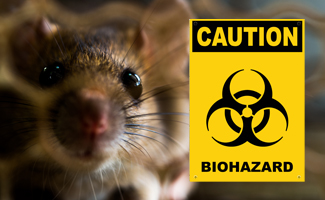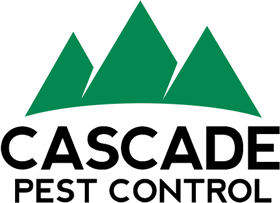Author: Kurt Treftz, Cascade Pest Control

Hantavirus is contracted through contact with the droppings, urine, and saliva of infected rodents, with the common deer mouse being the primary carrier in the Seattle / Puget Sound area. Ahead, we’ll review the risks of hantavirus, the types of rodents that carry the virus, and the steps you can take to limit the risk of exposure with preventative rodent control.
What is hantavirus, and what types of rodents carry it?
Hantavirus refers to a group of viruses carried by North American rodents, including the deer mouse, white-footed mouse, rice rat, and cotton rat. Of that group, only the deer mouse is commonly found in Washington State. The virus is spread through contact with rodent droppings, saliva, or urine, and contraction of hantavirus can lead to the potentially deadly hantavirus pulmonary syndrome (HPS).
What are the signs and symptoms of hantavirus pulmonary syndrome?
According to the Centers for Disease Control and Prevention, hantavirus pulmonary syndrome (HPS) is a severe respiratory disease, which develops between one and eight weeks from contact with the hantavirus. Early signs of HPS include flu-like symptoms of fever, fatigue, chills, headaches, and muscle aches. Later symptoms of HPS include severe shortness of breath and coughing. As the infection progresses, the lungs fill with fluid, which causes the severe respiratory symptoms that can lead to death.
How is HPS most commonly contracted and what can I do to prevent it?
In Washington State, HPS is most frequently contracted from contact with the droppings, urine, or saliva of the common deer mouse. The deer mouse typically has a body ranging from two to three inches long, with larger eyes and ears than the common house mouse. Contact with the hantavirus can occur when cleaning an infested area, living in a rodent-infested structure, or disturbing the living area of deer mice in the wild. Limiting your risk of exposure starts with learning how to safely clean up an infested area:
- When cleaning an area that has been infested by mice, it’s important to protect yourself before you start cleaning. The Washington State Department of Health recommends wearing rubber or latex gloves, while dust masks are a good idea for cleaning but won’t stop contraction of hantavirus.
- Hantavirus can remain in the dust around an infested area, even if you don’t touch the droppings directly. That’s why it’s important to avoid disturbing dust – which means vacuuming or sweeping are not recommended when cleaning after an infestation.
- Instead, soak the area in a solution of water and bleach, with one part bleach to nine parts water. Let the area soak for 10 minutes, then clean up any dust, nesting, and droppings with a damp towel. Once the area is clean, mop using the same bleach and water solution.
- When the job is done, double-bag all cleaning materials and debris. Disinfect the gloves before removing them from your hands, then wash your hands thoroughly with warm, soapy water.
Professional Rodent Control
While cleaning up after an infestation is important, it’s also a good idea to learn what you can do to prevent an infestation in the first place. Mouse control starts with eliminating sources of sustenance, while making sure that potential entry points to the home are sealed, including doors, windows, vents, pipes, and any small opening that a mouse might slip through.
If you live in the Seattle or Puget Sound region and believe you’re dealing with a mouse infestation or would like to learn more about how to prevent one in your home, remember that the professional rodent control team at Cascade Pest Control is always ready to assist with all of your mouse control needs.
